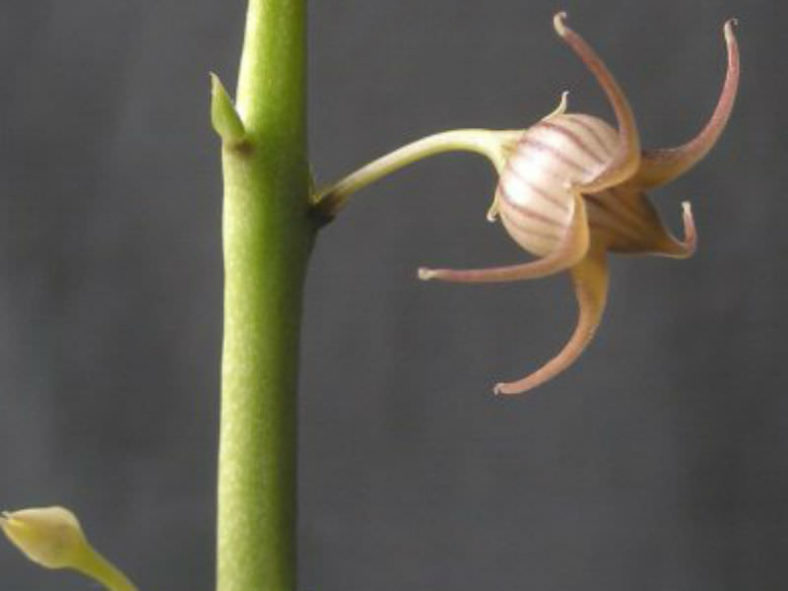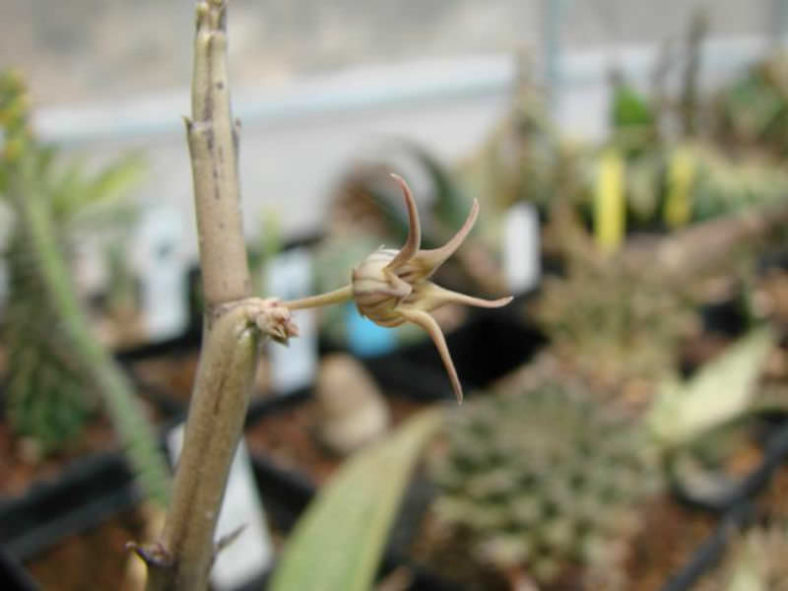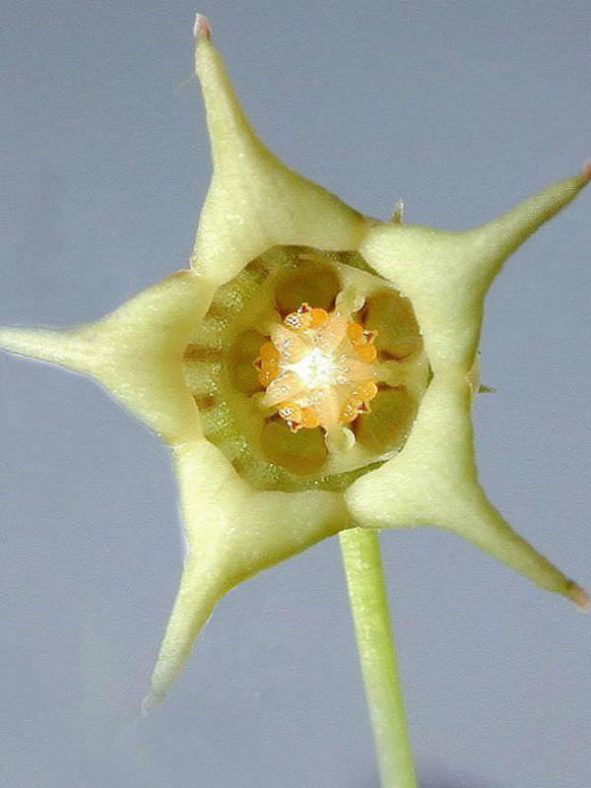Scientific Name
Caralluma edulis (Edgew.) Benth. ex Hook. f.
Synonym(s)
Boucerosia edulis, Caudanthera edulis
Scientific Classification
Family: Apocynaceae
Subfamily: Asclepiadoideae
Tribe: Ceropegieae
Subtribe: Stapeliinae
Genus: Caralluma
Etymology
The specific epithet "edulis" (pronounced "ED-yew-liss") means "edible" and refers to the leaves and stems of this species, which are eaten in North Africa.
Origin
Caralluma edulis is native to Eritrea, Sudan, the Arabian Peninsula, Pakistan, and India. It occurs in dry, sandy places in hot, arid areas.
Description
Caralluma edulis is a suckering succulent shrub with grey-green, obscurely 4-sided stems that have rounded angles and taper into an extended, thin, flower-bearing portion. The stems are generally unbranched and can grow up to 24 inches (60 cm) tall. The leaves are lance-shaped and persist even when dry.
The flowers are 5-merous, pendulous or spreading, and can reach a diameter of 0.3 inches (0.8 cm). They appear in widely spaced clusters of up to 5 on slender pedicels from spring to fall, with a predominance in summer. The pedicels can measure up to 0.6 inches (1.5 cm) in length. The corolla is urn-shaped, creamy white, with longitudinal red or brown lines. Lobes are triangular, spreading, and tinged red or brown.

Hardiness
USDA hardiness zone 10a to 11b: from 30°F (-1.1°C) to 50°F (10°C).
How to Grow and Care
Stapeliads are relatively easy to grow. However, they should be treated as an outdoor plant as they will easily rot indoors and cannot flower without exposure to outdoor temperature fluctuations. They should be grown under cover so that watering can be controlled. They require a reasonable amount of sunlight to promote flowering and maintain a well-shaped plant. Very shady positions will produce very poor flowering. Stapeliads come from climates where they survive extremely high temperatures in the summer months, so most growth is in spring and autumn, with flowering in autumn when the weather starts to cool down.
The easiest and best way to propagate Stapeliads is from stem cuttings, which can be taken virtually throughout the year. Using the seeds is also a method of propagation. However, they all require excellent drainage. Stapeliads are shallow-rooted. A collection of them can be planted nicely in a wide, shallow bowl. When planting, it is a good idea to allow the roots to be buried in soil and then put pure gravel or sand around the plant's base to prevent rot.
See more at How to Grow and Care for Stapeliads.
Links
- Back to genus Caralluma
- Succupedia: Browse succulents by Scientific Name, Common Name, Genus, Family, USDA Hardiness Zone, Origin, or cacti by Genus
Photo Gallery
Click on a photo to see a larger version.

